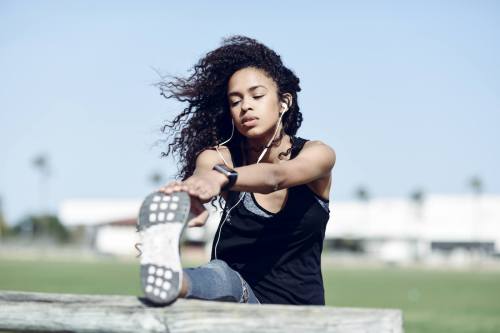As someone who still struggles to stand properly (it’s true), I’ve developed all sorts of muscle pain—especially in my lower back. I’ve tried a lot of things to deal with this lower back discomfort—which makes me feel more geriatric than I truly am—from trying a posture trainer to doing all sorts of back-strengthening workouts. But when a trainer told me that I should actually pay more attention to my hamstrings, things started to make a lot of sense.
“Your hamstrings originate on the bottom of the pelvis, the sitting bones, and insert over the knee on the tibia or fibula,” says Paul Searles, CSCS, a certified strength and conditioning coach with New York’s Sports Science Lab. “If the hamstrings are tight, they will pull on the pelvis, causing it to tilt.” If your pelvis is tilting, rather than straight, it’ll impact how your spine is aligned, which leads you to use your lower back more in movements like bending over. So your hamstring strength is key because it’ll help “keep your pelvis in its proper position, which in turn will help to keep your spine in its proper position,” he explains.
This explains a lot, considering the fact that I always catch my pelvis tilting in whenever I’m standing up for a long period of time (whoops). Pilates expert Erika Bloom also points out that the fascia is involved, too (aka the system of connective tissue that’s found throughout your entire body). “The fascia of the hamstrings connect directly to the pelvis, and then to the fascia of the muscles of the back,” she explains. “This means they have a huge effect on back pain.” A double whammy.
So the key is really working to balance out your muscles by strengthening the hamstrings so that your body doesn’t have to turn to the lower back to do a bunch of movements. “You can use hamstring exercises to train the hamstrings to be even, both in length and in strength and both from right to left and within each hamstring group,” says Bloom. “This means they’ll support posture and facilitate movement without tugging on the back in a way that causes instability and imbalance that leads to pain and injury.”
Her best remedy for the issue? Hamstring curls. “Pilates hamstring exercises on the reformer and Cadillac are ideal for finding balanced hamstrings,” says Bloom. “They ask for evenness, stability, and range of motion that creates healthy hamstrings and a pain-free back.” Of course, if you’re not around Pilates equipment, you can turn to regular hamstring curls at the gym.
Searles says it’s equally important to work on different functions of your hamstrings, too. “The hamstrings perform two main functions: flexing the knee and extending the hip,” he says. “It’s important to include both of these actions when training your hamstrings.” He recommends doing seated or lying leg curls, but also hip extensions like through a Romanian deadlift. Focus on those hammies, and you’ll wind up complaining less and less about that much-dreaded lower back pain.
If your neck or shoulders are in knots, try shoulder flossing to stretch them all out. And here are some yoga twists for lower back pain that can also help.
Sign Up for Our Daily Newsletter
Get all the latest in wellness, trends, food, fitness, beauty, and more delivered right to your inbox.
Got it, you've been added to our email list.











